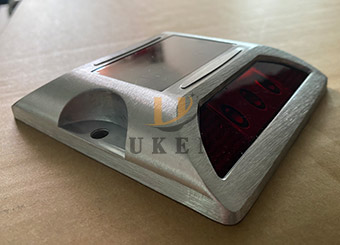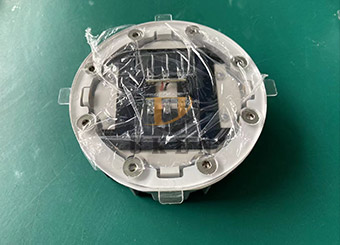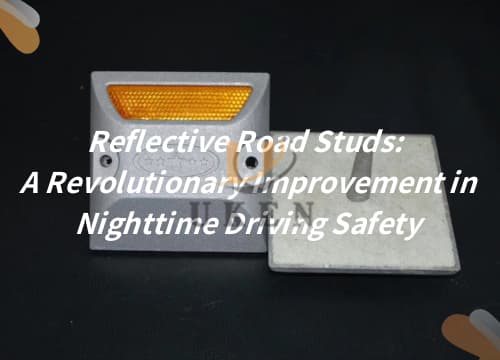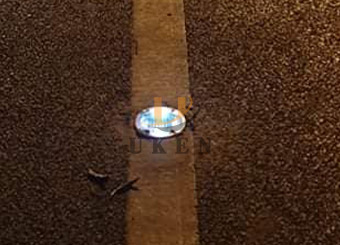In the current global push for sustainable development, solar street lights have emerged as a popular choice for urban and rural lighting due to their environmental benefits, energy efficiency, cost savings, and enhanced road safety. However, for many potential users—particularly government departments, property managers, and renewable energy enthusiasts in regions with cloudy climates—a critical question remains unanswered: Can solar street lights operate normally on cloudy days?
The core operation of solar street lights is based on the photovoltaic effect. The solar panels installed on the street lights are made of semiconductor materials. When sunlight hits the panels, electrons in the semiconductor absorb the energy of photons, forming electron-hole pairs. Under the influence of the internal electric field of the panel, electrons and holes move toward opposite ends, generating direct current (DC) and completing the conversion of solar energy into electrical energy.
The converted electrical energy is not directly used for lighting but is stored in the battery. The battery acts as an ‘energy warehouse,’ charging during daylight hours when sunlight is abundant to store energy for the streetlight’s operation during nighttime or periods of insufficient sunlight.
As night falls or ambient light weakens, the stored electrical energy in the battery begins to take effect. The electrical energy is transmitted through the circuit, driving the LED lights of the streetlight to emit light. LED lights have characteristics such as high luminous efficiency, low energy consumption, and long lifespan, enabling them to efficiently convert electrical energy into light energy, illuminating the surrounding environment and ensuring road lighting requirements.
On cloudy days, clouds block sunlight, significantly reducing the intensity and duration of sunlight reaching the ground, which directly affects the power generation efficiency of solar panels. Research data shows that on sunny days, the power generation efficiency of solar panels can reach 80%–90% of their rated power; however, on cloudy days, due to the reduction in light intensity from 1000 W/m² on sunny days to 100–200 W/m², the power generation efficiency of solar panels may drop to 30%–50%, resulting in a significant decrease in power generation.
Reduced power generation from solar panels means slower battery charging speeds and ultimately lower charging capacity. If cloudy weather persists, batteries may not receive sufficient power replenishment, leading to insufficient power levels, making it difficult to maintain prolonged nighttime lighting for streetlights, and potentially causing them to fail to illuminate properly.
The quality of solar panels is critical to their power generation capacity on cloudy days. High-efficiency solar panels can generate more electricity than standard panels even under weak sunlight on cloudy days. For example, monocrystalline silicon solar panels have a conversion efficiency of 20%–25%, outperforming polycrystalline silicon panels with a conversion efficiency of 15%–18% in cloudy conditions.
Battery capacity directly affects the continuous operation capability of solar street lights on cloudy days. High-capacity batteries can store more electricity, ensuring that street lights can provide normal illumination for longer periods at night, even during consecutive cloudy days with insufficient charging.
Different battery types also exhibit varying performance under cloudy conditions. Lead-acid batteries are cost-effective but have a higher self-discharge rate, resulting in faster energy loss under cloudy conditions; lithium-ion batteries, however, offer higher energy density and lower self-discharge rates, enabling better energy retention and providing stable power support for streetlights, though they come at a relatively higher cost.
A reasonable system design and configuration can significantly optimise the performance of solar streetlights on cloudy days. The size of the solar panels, battery capacity, and LED power must be appropriately matched. In cloudy regions, the area of the solar panels can be appropriately increased to enhance power generation capacity; large-capacity batteries can be paired to ensure sufficient energy storage; and LED lights with appropriate power can be selected to reduce energy consumption while ensuring lighting effectiveness, thereby improving the overall system’s adaptability on cloudy days.
With technological advancements, various advanced solar panel technologies suitable for low-light conditions have emerged. For example, thin-film solar panels are lightweight, flexible, and have low requirements for light angle, enabling good power generation performance even in overcast environments with abundant scattered light; bifacial solar panels can utilise both sides to absorb light, increasing total power generation and effectively enhancing energy output on cloudy days.
Through intelligent charging and discharging management systems, battery usage can be optimised. These systems automatically adjust charging and discharging strategies based on battery charge levels, light intensity, and streetlight usage conditions, avoiding overcharging or over-discharging, extending battery lifespan, and improving battery efficiency. Additionally, using high-capacity batteries or battery packs allows for storing more energy on sunny days to meet electricity demands during consecutive cloudy days, ensuring continuous streetlight operation.
A hybrid power supply system is an effective solution to address power supply issues during cloudy weather. This system combines solar energy with other energy sources, such as wind power or grid electricity. When solar energy is insufficient during cloudy weather, the system automatically switches to other energy sources to ensure stable lighting for streetlights. For example, in windy regions, small wind turbines can be integrated to complement solar energy with wind energy, providing a more stable power source for streetlights.
In the UK, where the climate is often cloudy and rainy, the application of solar streetlights was once heavily questioned. However, a city adopted solar streetlights equipped with high-efficiency monocrystalline silicon solar panels, large-capacity lithium-ion batteries, and an intelligent control system. Even during a week of continuous cloudy weather, the streetlights remained operational at night. The local government reported that these streetlights not only effectively reduced energy costs but also provided stable lighting, enhancing road safety.
In a mountainous region project in China, due to unreasonable system design and the selection of solar panels that were too small and batteries with insufficient capacity, the streetlights could only maintain lighting for 1–2 hours during consecutive cloudy days, failing to meet actual needs. This case demonstrates that scientific and reasonable system design and equipment selection are critical in solar streetlight projects, while also highlighting the necessity of regular maintenance and optimisation.
Although solar street lights may face challenges such as reduced power generation efficiency and limited battery charging due to insufficient sunlight on cloudy days, they can still operate stably thanks to the use of high-quality components, scientific system configuration, and the application of advanced technology and hybrid power supply modes. Against the backdrop of global efforts to promote green energy development, their environmental benefits, cost savings, and improved road safety advantages are significant. Whether in urban streets, rural roads, or venues such as industrial parks and scenic areas, solar street lights can become a reliable and sustainable lighting solution when combined with actual needs and collaborated with professional teams for reasonable planning and design. If you have related project requirements, please feel free to contact us to obtain professional product and service support, and jointly contribute to the development of green lighting initiatives.





